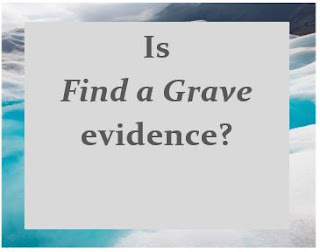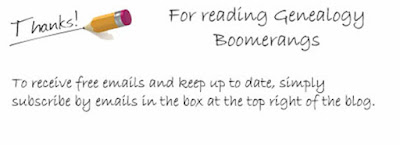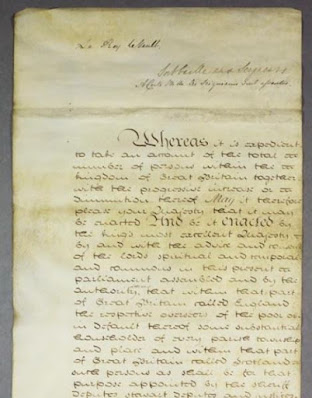Is Find a Grave an accurate source?
I use the Find a Grave website a lot! I have found the burial location of many of my ancestors via this useful website, but I do ask myself how reliable is it?
Find a Grave is an index, so it is a derived source. The information may have been accurately transcribed, but it is abstracted and compiled for a database. Even if a headstone has been photographed, the information on the headstone could be wrong.
The information the cemetery or monument makers used for their records would have come from living relatives of the deceased person. So this is usually secondary knowledge, even spouses may not have accurate knowledge. I have one person in my tree with vital records that record several different years of birth over about a 10 year period!
Consider how many people lied about their age to their spouse and children. Unless living relatives had a birth certificate, date of birth and age on Find a Grave may be close but not correct. I have found place of birth unreliable and lists of children are often incomplete. Date of death may be listed, but is it date of burial?
A source like Find a Grave is useful as a pointer to find more direct original sources. ALWAYS use the abbreviation ABT (about) if you don't have any vital records that back up your birth and death dates. This applies to ones that are derived from sources like census as well. It is not until you have a birth or death certificate that you can be sure of the date.
Sources give us information from which we select evidence for evaluation and finally a conclusion. If you want your research to be accurate follow this simple 'rules'.
- Document the Evidence in a consistent format
- Analyse the source
- Separate the facts from the assumptions
- Identify all related people in a source of information
- Identify what sources are missing or conflicting
- Document your conclusions
- Repeat when you get more evidence
Here is an example of what I mean, this is the Find a Grave entry for John Cockcroft.
It is likely to be my John Cockroft as he lived at this time in this area, and his wife is buried at this cemetery. The information this gives me is date of birth, date of death, and burial information. Lets look at the birth date and evidence I have in a simple spreadsheet:
Evaluation of the evidence provides us with some information about the date of birth. Firstly, there are no vital records - Birth, death, marriage, that record the DOB. Only the Pardon in 1848 is NOT an ESTIMATED year of birth. Find a Grave birth year is not reliable as it is not direct information, it would have come probably from a relative. The other documents are government documents, original records, likely primary information, and direct evidence. They still conflict however.
So what conclusion did I make? It is likely John was born in the time period 1809 - 1811, the exact year is not yet known. This means the Find a Grave entry is probably not correct for this information.
Find a Grave is a good website, easy to use and the wonderful people who take the time to create and document the memorials are my heroes. Just use good genealogy practice when using the information from it and, as always, make sure you document and evaluate it as a source.






So true John! Death certificates in particular seem to be very unreliable. All we can do as genealogists is to document our process of coming to a conclusion and revise it when the time comes. The joy of being a family historian. Barb
ReplyDeleteA great discussion. Love your graphic.
ReplyDeleteThanks Jill.
DeleteHis article is very useful, interesting and easy to read and understand, hopefully useful
ReplyDeleteThanks Obat, hopefully it helped you.
Delete